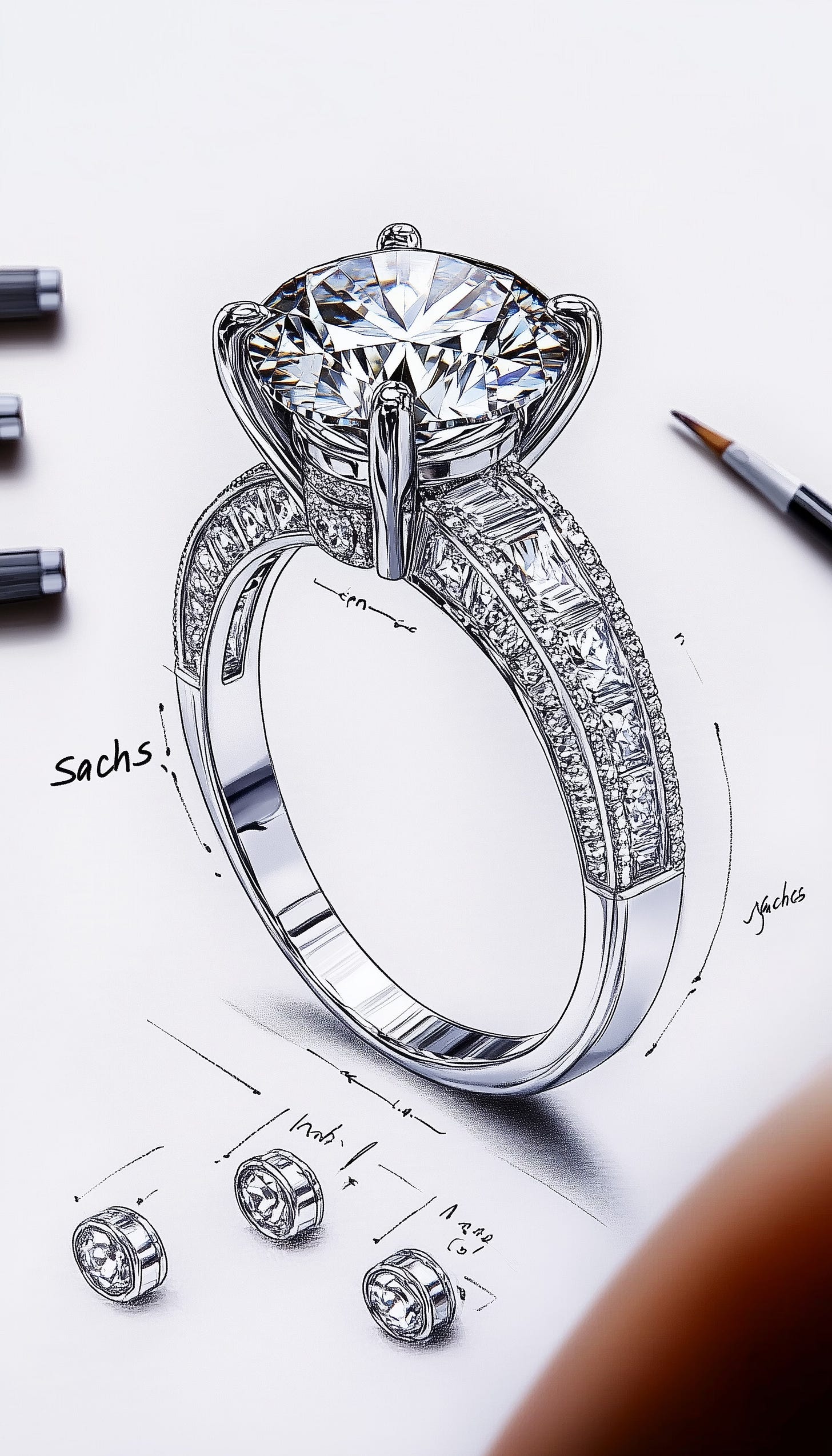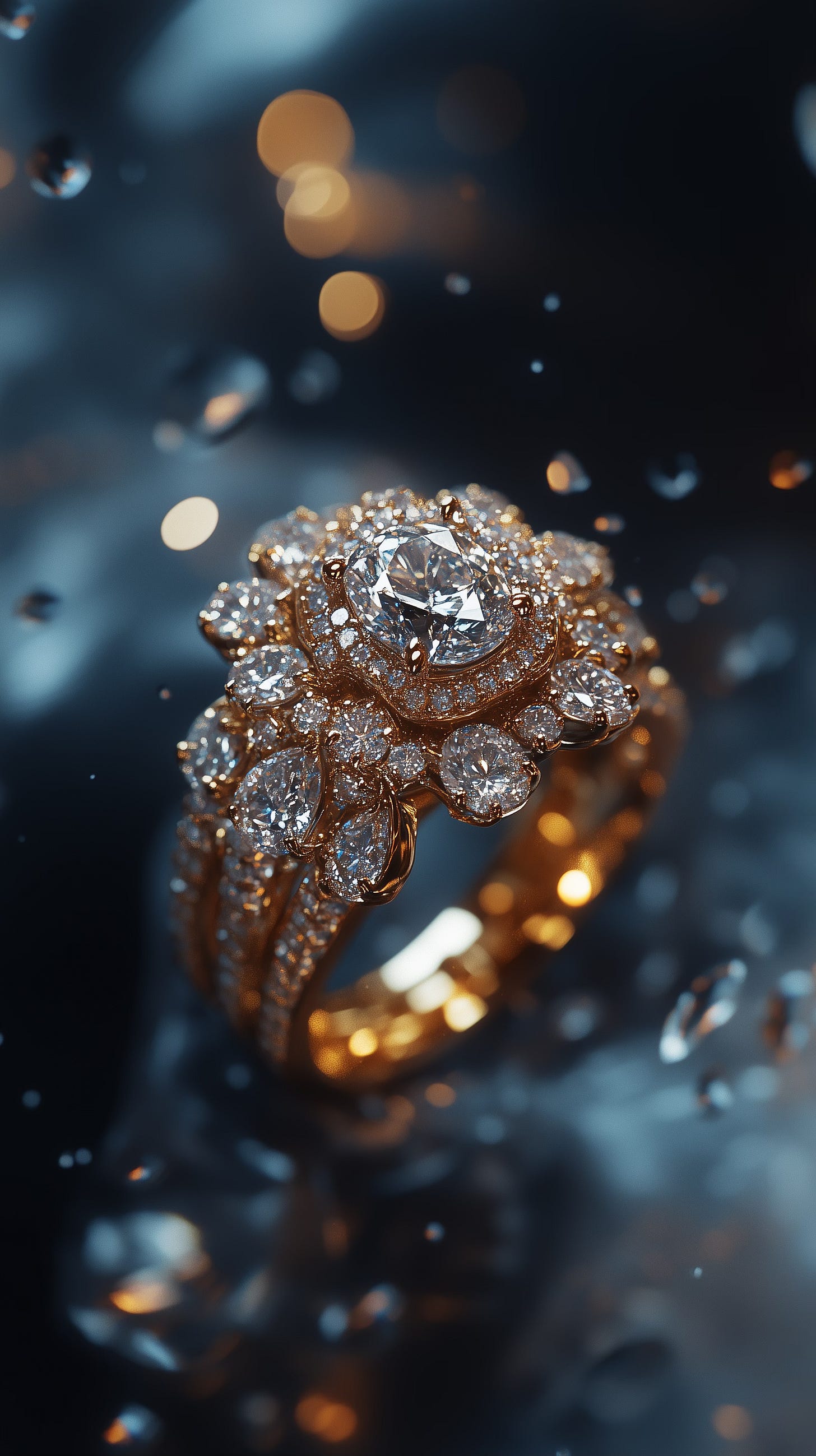Diamonds have long been admired for their beauty, strength, and symbolic meaning. Beyond their aesthetic appeal, diamonds offer unique benefits that make them highly sought-after. Their value is steeped in history, culture, and even some controversial conspiracy theories. Let's explore the benefits, symbolism, and rich cultural significance of diamonds, along with a glimpse into the intriguing myths surrounding them—and the rise of lab-grown alternatives.
Benefits of Diamonds:
Durability and Strength
Diamonds are the hardest natural material known to man, ranking a perfect 10 on the Mohs hardness scale. Their durability makes them ideal for daily wear in jewelry such as engagement rings and wedding bands, which symbolize everlasting commitment.Therapeutic Properties
In alternative therapies, diamonds are believed to enhance the energy of the wearer. Some practitioners claim that diamonds can help balance metabolism, enhance creativity, and provide clarity of thought.Investment Value
Diamonds, especially those of high quality, are often considered a sound investment. Over time, their value tends to appreciate, making them a secure store of wealth. Rare diamonds, in particular, can fetch exorbitant prices at auctions and private sales.Status Symbol
Owning diamonds is often associated with wealth, luxury, and social status. Throughout history, diamonds have adorned royalty and the elite, representing power, prestige, and exclusivity.Personal Empowerment
Many believe wearing diamonds can enhance personal confidence and empowerment. Diamonds are said to symbolize invincibility, courage, and strength, helping the wearer feel more resilient and empowered in life’s challenges.
Symbolic Significance:
Diamonds hold deep symbolic meanings that go beyond their physical appearance. They are often associated with eternal love, which is why they are commonly used in engagement rings. The word 'diamond' is derived from the Greek word "adamas," meaning unbreakable or invincible. This reflects not only the stone’s physical properties but also its representation of unyielding devotion and integrity.
In spirituality, diamonds symbolize purity, wisdom, and enlightenment. They are thought to elevate the wearer’s connection to higher consciousness and inner strength, creating a sense of balance and focus.
Historical and Cultural Importance:
Diamonds have captivated humanity for thousands of years. Ancient civilizations in India first discovered and traded diamonds as far back as the 4th century BC. For centuries, diamonds were believed to carry divine powers and were used in rituals, adornments, and even as protection in battle.
Throughout history, diamonds have signified wealth and royalty. Kings and queens wore them to assert their dominance and prestige. In the 20th century, diamonds became more accessible to the general public, largely due to marketing campaigns like De Beers' famous slogan, "A Diamond Is Forever," which solidified their association with love and marriage.
In various cultures, diamonds are often considered sacred stones. For example, in Hindu culture, diamonds are thought to bring clarity, fortune, and protection from harm.
Natural Diamonds vs. Lab-Grown Diamonds
With advances in technology, diamonds no longer need to be mined from the earth. Lab-grown diamonds, or synthetic diamonds, have become an increasingly popular alternative to natural diamonds, offering similar beauty and benefits with fewer ethical concerns. But how do they compare to natural diamonds in terms of use, and how can we tell the difference between them?
Natural Diamonds:
Jewelry: Natural diamonds are primarily used in luxury jewelry like engagement rings, necklaces, bracelets, and earrings.
Industrial Applications: Their hardness makes natural diamonds useful for cutting, grinding, and drilling in industries. Diamonds are often used in cutting tools for hard materials such as metals, stone, and concrete.
Scientific Uses: Natural diamonds are sometimes used in scientific experiments and technological devices that require their unique thermal and optical properties.
Lab-Grown Diamonds:
Jewelry: Lab-grown diamonds are visually indistinguishable from natural diamonds, making them a popular and more affordable option for engagement rings and fine jewelry.
Industrial Uses: Like natural diamonds, synthetic diamonds are used in cutting, grinding, and polishing tools. Lab-grown diamonds are also used in heat sinks and semiconductors due to their exceptional thermal conductivity.
High-Tech Applications: Lab-grown diamonds are used in advanced fields like quantum computing, high-power lasers, and radiation detectors. They are especially valuable in these sectors because they can be engineered for specific needs, such as having fewer impurities than natural diamonds.
How to Tell the Difference:
While natural and lab-grown diamonds are chemically and physically identical, there are some ways to distinguish between them:
Price: Lab-grown diamonds are usually 20-40% less expensive than natural diamonds of the same quality.
Certification: Lab-grown diamonds are often accompanied by certificates from gemological institutes stating their synthetic origin, while natural diamonds come with grading reports for their authenticity.
Specialized Equipment: Advanced tools, such as fluorescence and spectroscopy machines, can detect differences in growth patterns and trace elements that are unique to lab-grown diamonds.
Conspiracy Theories:
Despite their beauty and cultural significance, diamonds are not without controversy. One of the most prominent conspiracy theories surrounding diamonds involves their pricing and availability. Many believe that the global diamond supply is tightly controlled by a cartel, with De Beers often cited as the primary player. According to this theory, the scarcity of diamonds is artificially maintained, keeping prices high despite the fact that diamonds are not as rare as they are portrayed to be.
Additionally, ethical concerns regarding "blood diamonds" have led to global movements calling for more transparency in diamond sourcing. Blood diamonds, or conflict diamonds, are mined in war zones and sold to finance armed conflict. This has prompted the development of initiatives like the Kimberley Process, aimed at preventing the flow of conflict diamonds into the market.
Conclusion:
Whether natural or lab-grown, diamonds remain highly valued for their brilliance, durability, and symbolic meaning. Lab-grown diamonds offer a more ethical and cost-effective option without compromising quality, while natural diamonds carry centuries of tradition and allure. Both types of diamonds play significant roles in jewelry, industry, and technology. As you admire the brilliance of a diamond, remember that its story is as multifaceted as the gem itself—interwoven with history, culture, and even a dash of intrigue.










